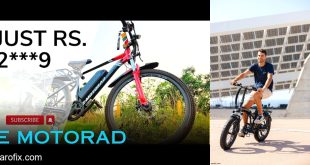Is Building Your Own Sur Ron Worth It?
The Sur Ron electric dirt bike has taken the e-mobility world by storm, combining motocross thrills with the eco-friendly advantages of electric power. But the question on every DIY enthusiast’s mind is: “Can I build my own Sur Ron, and is it actually worth it?” Let’s break it down with technical insights, practical advice, and real-world experiences.
Understanding the Sur Ron Platform
The Sur Ron is often referred to as the “Light Bee,” a nimble, high-performance electric bike designed for off-road adventures. Key specs for the standard Sur Ron include:
- Motor: 6kW brushless hub motor with peak torque up to 130 Nm
- Battery: 60V 32Ah lithium-ion pack providing 60–80 km range
- Weight: Approximately 50 kg (110 lbs)
- Top speed: Around 80 km/h (50 mph)
- Suspension: Adjustable front forks and rear mono-shock optimized for dirt trails
For anyone considering a DIY Sur Ron, these specs set the baseline for performance and components you’ll need.
Why Consider Building Your Own Sur Ron?
There are a few compelling reasons people think about DIYing a Sur Ron:
- Customization: Pick motor, battery, suspension, and aesthetics to suit your style.
- Learning experience: Gain intimate knowledge of electric drivetrains, wiring, and off-road bike mechanics.
- Cost control: Potentially save money if you source parts wisely, especially if you already have some components.
- Future upgrades: Easier to modify and maintain if you know every bolt and wire intimately.
Personally, I once attempted a DIY Sur Ron build using a salvaged frame and a 72V 3000W motor. The thrill of designing the battery placement and tuning the motor controller was addictive—but it wasn’t without challenges. Misaligned swingarms, overheating motor controllers, and wiring headaches were my daily companions.
Core Components for a DIY Sur Ron
Frame and Suspension
The frame must handle the stresses of off-road riding. Aluminum alloy frames are popular for their strength-to-weight ratio. Front suspension forks should be at least 120mm travel, while rear mono-shocks must be adjustable to handle varying rider weights.
Motor Selection
Brushless hub motors offer simplicity, while mid-drive motors deliver superior torque and climbing ability. Aim for a continuous output of at least 3–5 kW to mimic the Sur Ron experience. Tip: Always pair the motor with a compatible controller to avoid overheating.
Battery Pack
Lithium-ion is the standard. For DIY builds, a 60V 20–30Ah pack is a good starting point. Ensure proper BMS (Battery Management System) integration for safety and longevity.
Controller and Wiring
The controller regulates power from battery to motor. Modern controllers support regenerative braking, torque sensing, and thermal protection. Proper wiring with quality connectors and fuses is critical. Pro tip: Label every wire—trust me, it saves hours of troubleshooting.
Drivetrain and Wheels
Knobby off-road tires, hydraulic disc brakes, and reinforced rims are essential. Consider weight distribution when mounting the battery to maintain handling balance.
Step-by-Step DIY Considerations

1. Frame Prep
Check alignment, weld integrity, and shock mounts. Tip: Test fit all major components before committing to final assembly.
2. Motor Installation
Ensure correct axle spacing, torque settings, and cooling considerations. Hub motors are simpler; mid-drive requires precise chain or belt alignment.
3. Battery Integration
Secure the battery low and central to maintain center of gravity. Include ventilation or heat dissipation for long rides.
4. Wiring and Controller Setup
Follow manufacturer schematics for motor-controller-battery connections. Add a fuse and main cutoff switch for safety. Test in low-power mode first.
5. Suspension and Brakes
Adjust damping, preload, and brake lever reach. Test stopping power at low speeds before hitting trails.
6. Final Assembly and Test
Check torque on all bolts, tighten wheels, and test throttle response. Begin with short rides, gradually increasing speed and terrain difficulty.
Common Challenges
- Misaligned swingarm causing chain wear
- Battery overheating due to poor ventilation
- Controller overheating if motor and battery specs mismatch
- Frame cracks under high torque or jumps
From my own build, I learned the hard way that a $100 “good enough” controller was not good enough. Upgrading to a proper high-current controller fixed all overheating issues and made climbing steep trails a joy.
Trends and Sustainability
Electric dirt bikes, including Sur Ron builds, are part of a growing sustainable mobility trend. Key innovations include:
- Modular battery packs for easy replacement and longer rides
- Improved lithium-ion chemistries with higher energy density
- Smart controllers with Bluetooth connectivity for ride analytics
- Lighter, stronger composite frames reducing environmental impact
Electric off-road bikes cut emissions and noise pollution, making them ideal for trail riding in eco-conscious areas.
Maintenance Tips
- Check wiring and connectors after each off-road ride
- Inspect battery pack for swelling or heat damage
- Lubricate chain and check sprockets
- Bleed brakes regularly and inspect pads
- Adjust suspension for rider weight and terrain
Frequently Asked Questions
Is building a DIY Sur Ron worth the time?
If you enjoy tinkering, learning, and customizing your ride, yes. But expect trial-and-error and potential extra costs for upgrades and replacements.
How much does it cost?
Depending on components, expect $2,000–$5,000. Higher-end motors, controllers, and batteries can push this higher than a stock Sur Ron.
Do I need advanced mechanical skills?
Basic mechanical and electrical skills are sufficient for hub motor builds. Mid-drive or custom frame builds require more expertise.
Can I achieve the same performance as a stock Sur Ron?
Yes, with careful selection of motor, battery, and controller. Proper weight distribution and suspension tuning are key.
Is it environmentally friendly?
Absolutely. DIY builds often reuse parts, reducing manufacturing emissions, and electric power reduces trail noise and local pollution.
How long does it take to build?
Expect 20–60 hours depending on experience, component availability, and level of customization.
Pro Tips for DIY Sur Ron Builders
- Start with quality parts: Cheap components often fail under high torque and off-road conditions.
- Document assembly: Take photos and notes for troubleshooting.
- Test incrementally: Start with low power and short rides to prevent catastrophic failures.
- Protect electronics: Waterproof enclosures and silicone grease on connectors prevent damage from mud and rain.
- Weight balance: Place the battery and controller centrally to maintain handling and stability.
Conclusion
Building your own Sur Ron is a rewarding adventure if you’re prepared for the technical and financial investment. You gain unmatched customization, mechanical knowledge, and eco-friendly thrills. For hobbyists and off-road enthusiasts, a DIY Sur Ron can rival stock models and even surpass them in tailored performance. But it requires patience, quality components, and a willingness to troubleshoot. If you’re ready for the challenge, the ride is unforgettable.
In the end, the answer is personal: if learning, tinkering, and ultimate customization excite you more than simply owning a ready-made bike, building your own Sur Ron is absolutely worth it.
 Electric Bike & Bicycle Repair Hub Master DIY electric and traditional bike repairs with practical tips and trusted product recommendations.
Electric Bike & Bicycle Repair Hub Master DIY electric and traditional bike repairs with practical tips and trusted product recommendations.



